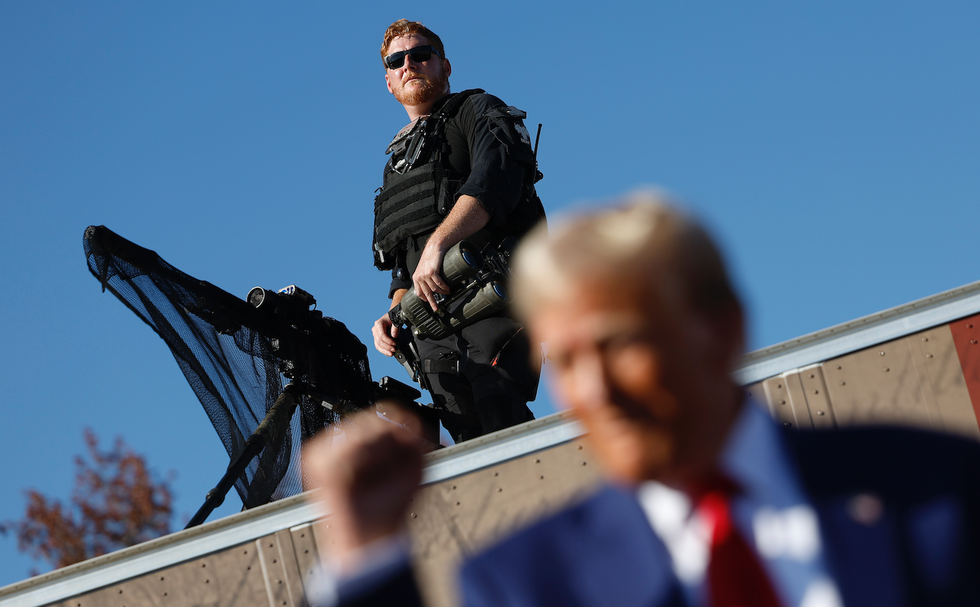Since Oct. 7, 2023: A year that will live in infamy
'The Biden administration has shown no sign of grasping strategic reality'



By the evening of December 7th, 1941, President Franklin Roosevelt understood that the world crisis had taken a new, decisive turn. The United States had been attacked. It must go to war. Yet despite Roosevelt’s apparent rhetorical shock – he inserted the famous “infamy” phrase to emphasize American victimhood vis-a-vis Japan – the Pearl Harbor attacks fit within the constellation of American strategy. Washington’s policymakers, from the president down, understood that the United States would go to war in the coming two years, and potentially in the coming six months depending upon Japanese and German action. Indeed, the Fall of France had impressed upon the United States the non-viability of strategic patience. America had to act and wage war against the revisionist coalition, or risk a permanent, potentially fatal reversal of the Eurasian balance.
A year on from Hamas’ barbaric attack on Israel, it is clear that the United States remains shocked and surprised. The Biden administration has shown no sign of grasping strategic reality. Washington faces a world crisis as intense as that of the late 1930s and early 1940s. Its goal must be victory, for without it, the American Republic is unlikely to survive. Instead, the U.S. policy class has embraced a paradigm of de-escalation and war avoidance that guarantees a longer, bloodier contest, whether in this decade or the next.
The Hamas assault on October 7th was a particularly brutal, but eminently foreseeable, step in the Eurasian Axis’ attempt to destroy the U.S.-led strategic system. Russia, Iran, and China all chafe under the constraints of American power. They all object to the alleged injustice of sovereignty, the denial of their ambition against their neighbors, and the supposed humiliation of their inability to transform the political environment around them at will. These regimes may subscribe to radically distinct ideologies, and they may distrust and ultimately despise each other, but this shared hatred makes them a coherent challenge to American power.
Russia’s full-scale invasion of Ukraine initiated a new, open phase of contestation. Prior to this, the Eurasian Axis had cloaked its ambitions. Russia had denied it invaded Ukraine the first time in 2014, Iran seldom attacked Israel or the United States directly, and China resorted to indirect quasi-civilian pressure instead of overt military coercion. Russian tanks rolling across the Ukrainian border eliminated this fiction, replacing it with the raw exercise of power. Moscow’s armies were checked in their initial ambitions. They have nevertheless exacted a terrible price from Ukraine – tens of thousands dead, hundreds of thousands maimed, cities flattened, women raped, and men tortured. This war is existential for Russia. Victory confirms Moscow’s status as the capital of a great Eurasian power. Defeat confirms the verdict of 1991, that Russia is little more than a resource-rich, multi-ethnic kleptocracy, in other words a normal dysfunctional country, not a world-historical empire. American policy, however, has continuously sought to restrict this war, ever fearful of provoking an outsized Russian escalation, even as Russia conducts sabotage in the West, supports the Axis’ other members, and readies its economy and society for unending wars of conquest and annihilation. Restraining Ukraine, giving it enough support to survive but not to win, simply ensures a direct contestation, whether before or after Ukrainian capacity reaches its breaking point.
Iran’s attack on October 7th – for Hamas is a member of Iran’s Axis of Resistance, not an independent actor sui generis – opened up another front in the world crisis. Iran sought to have Hamas break through to the West Bank, triggering an intifada against Israel. With the IDF overstretched, Hezbollah would have assaulted from the north, a situation forestalled only by rapid Israeli mobilization and stout defense against Hamas’ initial incursion. Since that point, Iran has hoped to tie Israel down in a ring of conflicts. Hamas kidnapped over 240 hostages, placing in opposition Israel’s strategic imperative to eliminate the threat from Gaza with the political demand to recover Israel, and lest we forget, American, citizens. It then activated its proxy network across the Middle East, attacking U.S. bases in the Levant, harassing international shipping in the Bab-el-Mandeb, and threatening Israel from Lebanon. For the past year, Israel has been engaged in a delicate strategic balancing act, seeking to deter Hezbollah in the north as it grinds down Hamas in Gaza. But all the while, international pressure on Israel has mounted, as Iran leverages the Islamist-Leftist partnership to question the Jewish State’s basic right to national security.
Initially, the Biden administration’s response seemed robust. It deployed an American carrier group to deter further Iranian intervention and gave Israel full-throated rhetorical support. This position evaporated by the end of 2023. Since December last year, the U.S. has accused Israel of obstructing ceasefire talks – never mind that a ceasefire on Hamas and Iran’s terms would amount to Israeli capitulation. It has restrained any Israeli attempt to impose cost on Iran in Lebanon. It has accused Israel of reckless escalation for any strategically creative offensive action. It has lifted sanctions on Iran and threatened to impose them on Israel. Most egregiously, it has insisted upon a fantastical two-state solution, ignoring the reality that the structure of Palestinian sovereignty the U.S. sponsored through the Oslo Accords, and the subsequent decay of Palestinian political authority into corrupt mafia-esque autocracy, guarantees a Hamas takeover of the West Bank if a State of Palestine is created today.
It is almost as if senior American policymakers see Iran as a reasonable actor drawn into a crisis beyond its control, and Israel as a bloodthirsty tyrannical regime. Never mind that the former country executes citizens for homosexuality and beats women to death for refusing to wear the hijab, while the latter holds regular elections and has a quintessentially democratic domestic political debate.
At this point, Israel has eliminated the threat from Hamas, while Ukraine has fought Russia to a bloody standstill. Israel’s campaign against Hezbollah—destroy communications, decapitate leadership, and neutralize enemy offensive capability—is working despite the Biden administration’s opposition. There is still time for the U.S. to recover strategically.
In the Middle East, the U.S. could provide Israel badly needed diplomatic cover for operations in Gaza, refusing to entertain nonsensical ceasefire talk and placing the blame for the conflict on Iran. It could sanction Iran as it did in the late 2010s, sapping its economic strength and reducing Iran’s ability to act abroad. It could actually respond to Iranian attacks on U.S. bases, demonstrating that there is a cost to Iranian adventurism. It could use its naval forces in and around the Red Sea to destroy Houthi military capability rather than to defend itself from Houthi missiles. And it could prepare for, and enable, Israeli operations in Lebanon, and in time, against Iran’s nuclear program.
In Europe, the U.S. could abandon a feckless policy of escalation management, instead removing restrictions on Ukrainian targeting. It could surge badly needed weapons to the Ukrainian military, while investing in a defense industrial renaissance in the U.S. and Europe. It could integrate Ukraine into a broader European security system that deters, and if necessary, can defeat, future Russian aggression, while demonstrating to the Europeans that Washington remains committed to Europe’s strategic future.
All this is possible with a modicum of good sense and political will.
Japan’s attack on Pearl Harbor may have shocked Franklin Roosevelt. But it did not surprise him. He had spent the last five years slowly, carefully preparing the U.S. for entry into a protracted Eurasian war, one that would end only with the destruction of the Axis powers. In the 24 months leading up to December 7th, 1941, the Roosevelt administration had put the U.S. economy on a war footing, expanded support for the UK, and refined its strategies for fighting a Eurasian conflict.
The difference today is that the U.S. has taken no similar steps. The longer it waits, the greater the risk that it experiences another day that will live in infamy. America’s enemies are gathering and will inevitably strike at it directly. Every day wasted beyond this year of infamy will need to be repaid in more blood.
Seth Cropsey is president of Yorktown Institute. He served as a naval officer and as deputy Undersecretary of the Navy and is the author of Mayday and Seablindness.
SUPPORT TRUTHFUL JOURNALISM. MAKE A DONATION TO THE NONPROFIT WND NEWS CENTER. THANK YOU!
Originally Published at Daily Wire, World Net Daily, or The Blaze
What's Your Reaction?
































































































